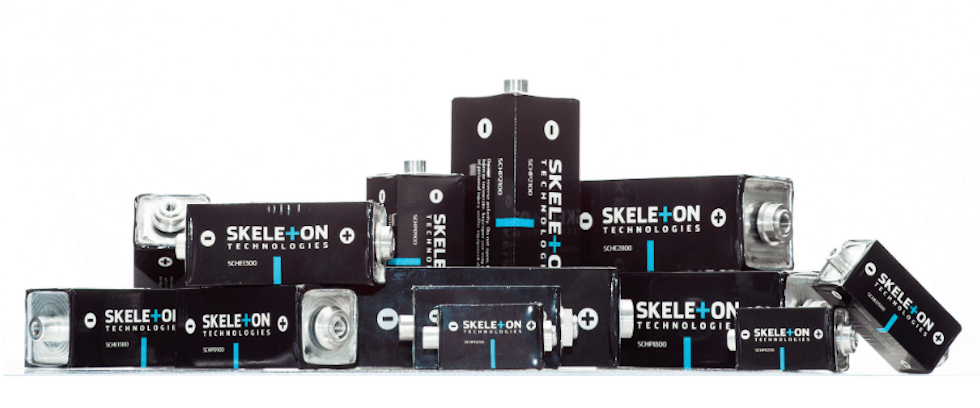Skeleton Technologies, based in Estonia, received the funding from sustainable investment firm KIC InnoEnergy, to further develop its ultracapacitors, including improving its electrode and cell design to allow for higher working voltages.

Unlike batteries, ultracapacitors - or supercapacitors - store energy in an electric field rather than a chemically, allowing them to charge and discharge much more quickly. They can survive up to one million charge cycles, giving them a much longer lifecycle than batteries.
They also have up to 60 times the power density of batteries, making them attractive for use in transportation, and in energy storage for the electricity grid.
Conventional ultracapacitors are built with activated carbons as the active material in their electrodes. In contrast, Skeleton’s ultracapacitors are manufactured with nanoporous carbide-derived carbon (CDC), or curved graphene, according to the company’s CEO Taavi Madiberk.
“We finely engineer the carbon pore size and structure, and create one layer thick carbon structures inside the material,” said Madiberk. “The pore size and distribution is important, because it gives us a perfect fit for the electrolyte ions, and we can utilise all of the surface area,” he said.
This gives the devices twice the energy density and five times the power density of other ultracapacitors, he said.
The company now aims to increase this energy density even further, reaching a target of 20 Watt-hours per kilogram by 2020. “Currently the best competitors on the market have a maximum of 7Wh/kg energy density,” said Madiberk.
As well as expanding the potential range of applications for the devices, this should also help to bring down their cost, he said. That is because around 70% of the overall cost of ultracapacitors goes into the material used to produce them.
The company also plans to use the funding to increase manufacturing of its existing devices, he said. “We plan to ramp up our manufacturing capacity this year to about 300,000 large units.”




Red Bull makes hydrogen fuel cell play with AVL
Formula 1 is an anachronistic anomaly where its only cutting edge is in engine development. The rules prohibit any real innovation and there would be...